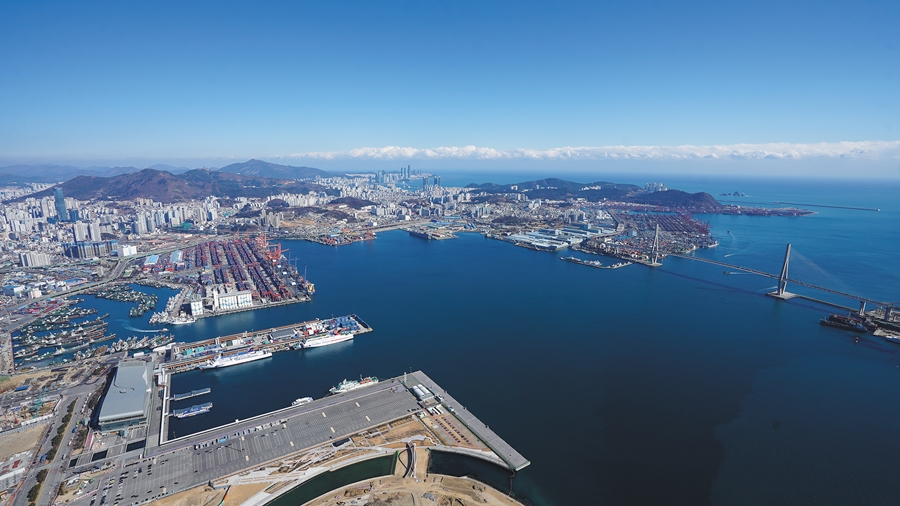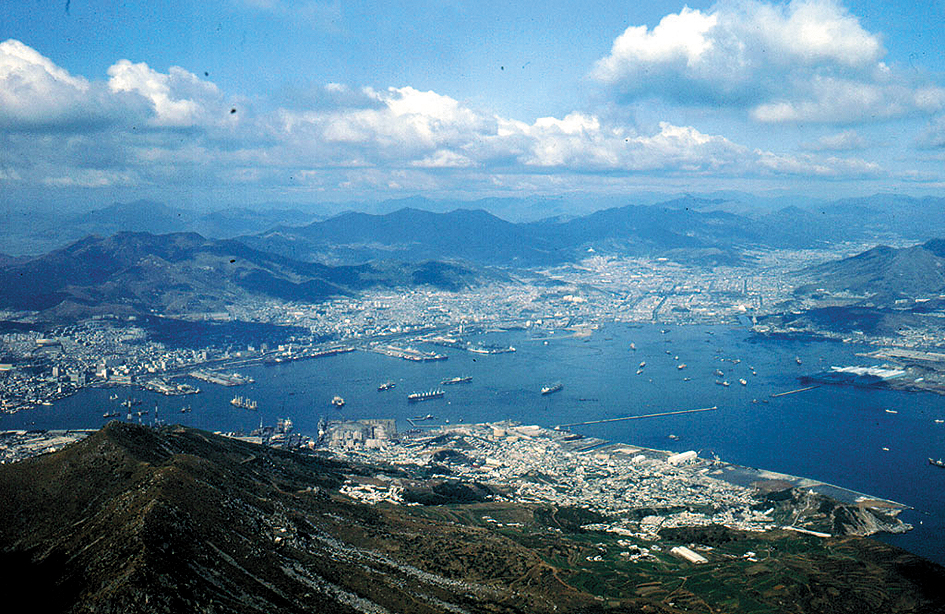News
From refugee harbor to busy port, Busan continues to evolve
Some might wonder why Korea chose Busan as its candidate city to host the World Expo 2030. However, the southern port city has been the backdrop of some of this country's most important events. Given its role during the Korean War and after, Busan is the perfect place to host the World Expo.
During the Korean War, refugees from around the country gathered in Busan, swelling the city's population from 400,000 to 1 million people. The city served as the provisional capital for 1,023 days and underwent many changes to accommodate the massive influx. The areas developed to house the refugees during this period include Sanbok-doro (Mountainside Road) and Daldongnae (Hillside Moon Village). North Port, the potential venue for the World Expo 2030, was also home to these refugees; countless makeshift shelters once lined the area.
At the time, men mainly did manual labor, working at wharves or rail stations; women made a living selling wares or seafood at local markets, including Jagalchi Market, Gukje Market and Bupyeong Market. Traces of the past can still be found in the old downtown areas of Dong-gu (district), Seo-gu and Yeongdo-gu.
Busan's famous foods also date back to this time in history. Dwaeji gukbap (pork soup and rice) and milmyeon (wheat noodles) began as humble re-creations of foods from refugees'hometowns. Instead of beef, which was expensive and hard to come by, people used pork to make a cheap yet satisfying soup. Similarly, wheat flour was used to make noodles instead of buckwheat flour.
Busan and its citizens overcame the wounds of war by adapting to its circumstances and embracing other cultures. It is this spirit that has pushed Busan to develop into one of the world's biggest trade ports.
The North Port was a driving force behind the "Miracle on the Han River," a period of rapid economic growth following the War. The trade activity from the port helped turn Korea from a country in need of aid to one that provides aid to other countries. After the War, various relief supplies to help rebuild the country came through Busan. In time, the port became a gateway for Korea to export its products around the world. Today, the Busan Port is a premier logistics hub in Northeast Asia, ranked in the top seven worldwide in terms of traffic volume.
Busan and the Korean government intend to convey the historical significance of the city and a message of peace to the world through the World Expo 2030.

Busan Port can handle up to 300 million tons of cargo in a year.
cw8.jpg&fileext=jpg&filetype=image/jpeg&filesize=195704)
Busan Port in 1882. The port opened to international trade in 1876.
cw8.jpg&fileext=jpg&filetype=image/jpeg&filesize=288370)
A ferry docked in Busan Port in 1925.
cw8.jpg&fileext=jpg&filetype=image/jpeg&filesize=227749)
Unloaded relief supplies at Busan Port Pier 2 during the Korean War.

Busan Port and National Korea Maritime and Ocean University in the 1970s. The school opened in Busan in 1953.
cw8.jpg&fileext=jpg&filetype=image/pjpeg&filesize=827040)
Shipyard in Busan Port in the 1980s. It was during this period that Korea became a major shipbuilding nation.

